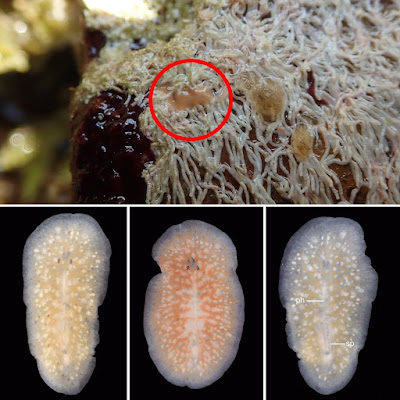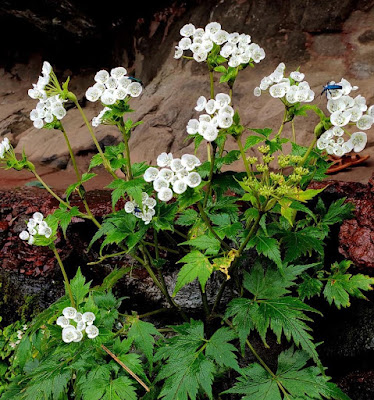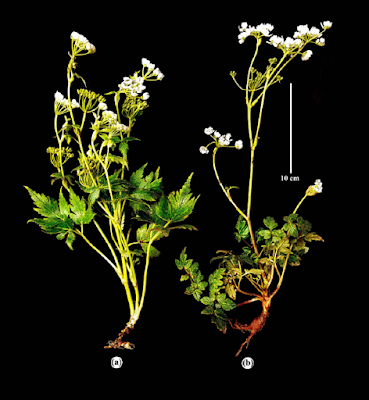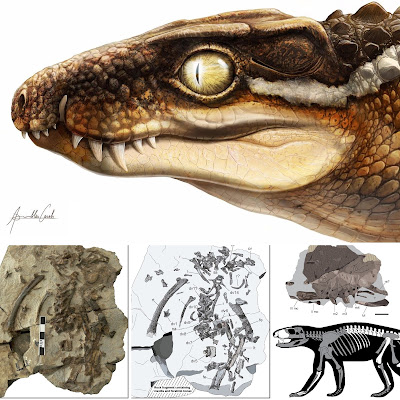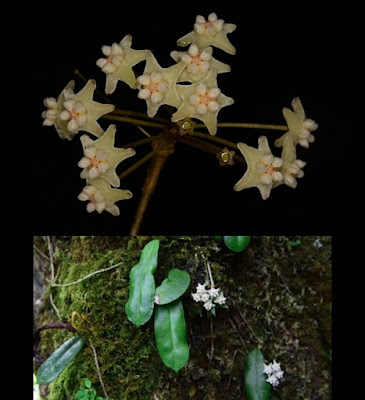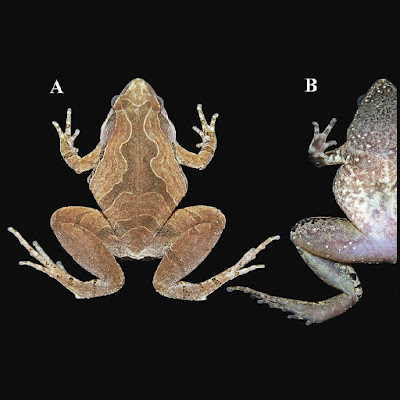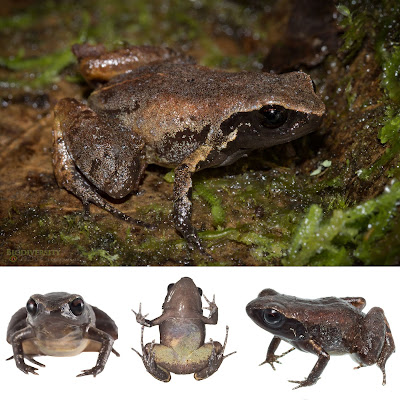[Most Recent Entries] [Calendar View]
Friday, September 18th, 2020
| Time | Event | ||||
| 3:57a | [Invertebrate • 2020] Zygantroides serpulidicola • A New Species of Zygantroides (Platyhelminthes: Polycladida) from Amakusa, Japan
We describe a new species of ilyplanid polyclad, Zygantroides serpulidicola sp. nov., from Amakusa, Kumamoto, Japan. This is the third member of Zygantroides Faubel, 1983 and the first record of the genus from the Pacific Ocean. Zygantroides serpulidicola sp. nov. is characterized by i) the mouth opening near the common gonopore, ii) the sperm ducts separately entering a pear-shaped seminal vesicle, iii) an elongated Lang’s-vesicle duct, and iv) the horseshoe-shaped Lang’s vesicle located posterior to the common gonopore. We provide a partial sequence of the mitochondrial cytochrome c oxidase subunit I (COI) gene (712 bp) as a DNA barcode for the species. Our phylogenetic analyses based on concatenated sequences of the 16S, 18S, and 28S ribosomal DNA and COI indicate that Z. serpulidicola sp. nov. is nested in a clade comprised of Discocelidae and Ilyplanidae; the latter does not appear to be monophyletic. Keywords: Acotylea, Discoceloidea, DNA barcoding, marine flatworm
Taxonomy Genus Zygantroides Faubel, 1983 Redefinition. Ilyplanidae without tentacles and marginal eyes. Pharynx somewhat oriented posteriorly. Genital tracts entering separately into common genital atrium; male complex with seminal vesicle and papillate penis. Distal part of ejaculatory duct lined with glandular ciliated epithelium. Lang’s vesicle present (see Remarks). Zygantroides serpulidicola sp. nov. Etymology. The new specific name serpulidicola is a noun in apposition and refers to the habit that the flatworms dwell on tubes of serpulid annelids (Fig. 1). Yuki Oya, Aoi Tsuyuki and Hiroshi Kajihara. 2020. A New Species of Zygantroides (Platyhelminthes: Polycladida) from Amakusa, Japan. Species Diversity. 25(2); 189–196. DOI: 10.12782/specdiv.25.189 | ||||
| 4:30a | [Botany • 2020] Pinda shrirangii (Apiaceae) • A New Elegant Species from the northern Western Ghats, India
Abstract A new species, Pinda shrirangii Gosavi & Chandore, is described and illustrated from a high‐elevation region of northern Western Ghats, India. The new species is closely allied to the only other species in the genus, Pinda concanensis (Dalzell) P.K.Mukh. & Constance which was also described from the northern Western Ghats of Maharashtra state of India. Coloured photographs and illustrations are provided to facilitate the identification. Keywords: Apiaceae, endemism, high elevation, Maharashtra, monotypic, Pinda, taxonomy
Pinda shrirangii Gosavi & Chandore, sp. nov. Etymology: The specific epithet is in honor of Emeritus Scientist Prof. (Dr.) Shrirang Ramchandra Yadav working at Department of Botany, Shivaji University, Kolhapur for his extensive contribution in the field of angiosperm taxonomy. Kumar Vinod Chhotupuri Gosavi, Nilesh Appaso Madhav, Devidas Bhausaheb Borude and Arun Nivrutti Chandore. 2020. Pinda shrirangii, A New Elegant Species of Apiaceae from the northern Western Ghats, India. Nordic Journal of Botany. DOI: 10.1111/njb.02771 | ||||
| 6:07a | [Herpetology • 2020] Abronia morenica • A New Species of Abronia (Squamata: Anguidae) from a Protected Area in Chiapas, Mexico
Abstract We describe a new species of the genus Abronia from the La Sepultura Biosphere Reserve in western Chiapas, México. The new species is known only from the vicinity of the type locality in the Sierra Madre de Chiapas. It is readily distinguished from all congeners by the following combination of characters: lack of protuberant or spine-like supra-auricular scales, lack of protuberant or casque-like posterolateral head scales, 30–35 transverse dorsal scale rows, lateralmost row of ventral scales enlarged relative to adjacent medial row, dorsum brown with 8–10 transverse dark crossbands, and dark lateral bar on the neck extending from the shoulder to near the auricular opening. We tentatively assign the new species to the subgenus Lissabronia pending the availability of a robust, comprehensive molecular phylogeny for the genus. We discuss regional Abronia biogeography and comment on the conservation implications of our discovery for the imperiled highland forests of the Sierra Madre de Chiapas, a globally important center of endemism. KEYWORDS: Alligator lizard, biosphere reserve, conservation, Gerrhonotinae, morphology, Sierra Madre de Chiapas, systematics, taxonomy Adam G. Clause, Roberto Luna-Reyes and Adrián Nieto-Montes De Oca. 2020. A New Species of Abronia (Squamata: Anguidae) from a Protected Area in Chiapas, Mexico. Herpetologica. 76(3); 330-343. DOI: 10.1655/Herpetologica-D-19-00047 New ‘tree dragon’ discovered in Mexican forest  | ||||
| 6:46a | [Paleontology • 2020] Ogresuchus furatus • A Small Cretaceous Crocodyliform (Notosuchia: Sebecidae) in A Dinosaur Nesting Ground and the Origin of Sebecids
Abstract Sebecosuchia was a group of highly specialized cursorial crocodyliforms that diversified during the Cretaceous and persist until the end of the Miocene. Their unique combination of cranial and post-cranial features indicates that they were active terrestrial predators that occupied the apex of the Late Cretaceous terrestrial ecosystems, even competing with theropod dinosaurs. Here, we report the discovery of the earliest sebecid worldwide, and the first from Eurasia, Ogresuchus furatus gen. et sp. nov., based on a semi-articulate specimen located in a titanosaurian sauropod nesting ground. The new taxon challenges current biogeographical models about the early dispersal and radiation of sebecid crocodylomorphs, and suggests an origin of the group much earlier than previously expected. Moreover, the new taxon suggests a potential convergent evolution between linages geographically isolated. Taphonomic evidences suggest that Ogresuchus died almost in the same place where fossilized, in a dinosaur nesting area. Biometric and morphologic observations lead to speculate that Ogresuchus could easily predate on sauropod hatchlings.  Systematic palaeontology Crocodylomorpha Walker, 1970 (sensu Clark, 1986). Crocodyliformes Hay, 1930 (sensu Clark, 1986). Mesoeucrocodylia Whetstone and Whybrow, 1983. Notosuchia Gasparini, 1971. Sebecosuchia Simpson, 1937. Sebecidae Simpson, 1937. Ogresuchus furatus gen. et sp. nov. Diagnosis: Small-sized sebecid diagnosed by the following autapomorphies: five maxillary tooth positions; teeth with smooth (unserrated) carinae; presence of apicobasal ridges on the enamel of the incisiviform and caniniform teeth; presence of apicobasal ridges on the enamel of posterior teeth; large and aligned neurovascular foramina on lateral surface of the maxilla; foramen in perinarial depression of the premaxilla; very large incisive foramen; absence of a large nutrient foramen on palatal surface of the premaxilla-maxilla contact; palatal surface of the maxilla without rugose surface; nasal-maxilary contacts remain parallel to each other (do not converge anteriorly or posteriorly); postzygapophyses located dorsally to the transverse processes in dorsal vertebrae. Etymology: Genus name after Ogre- (French), in reference to the inferred feeding behaviour that included infant individuals, like the mythological creature from European folk tales; and –suchus, from the Greek Souchos meaning crocodile. Species name after furatus, from the Latin furari meaning to be stolen, in reference to the unfortunate event that took place during the fieldworks (see Supplementary Information S1). Holotype: MCD-7149 (Museu de la Conca Dellà), a semi-articulate skeleton preserving the anterior part of the rostrum and several axial and appendicular elements (Fig. 1), and nine associate blocks containing large dinosaur eggshell fragments. Type locality and horizon: El Mirador site, (Coll de Nargó area, Lleida Province, Catalonia). High cemented grey marl level from the “lower grey unit” of the Tremp Formation; early Maastrichtian (near the C32n-C31r chrone boundary). Albert G. Sellés, Alejandro Blanco, Bernat Vila, Josep Marmi, Francisco J. López-Soriano, Sergio Llácer, Jaime Frigola, Miquel Canals and Àngel Galobart. 2020. A Small Cretaceous Crocodyliform in A Dinosaur Nesting Ground and the Origin of Sebecids. Scientific Reports. 10, 15293. DOI: 10.1038/s41598-020-71975-y | ||||
| 7:11a | [Botany • 2020] Hoya gaoligongensis (Apocynaceae: Asclepiadoideae) • A New Species from Yunnan, SW China
Abstract We describe and illustrate Hoya gaoligongensis M.X. Zhao & Y.H. Tan (Apocynaceae, Asclepiadoideae), a new species native to mid-elevation moist evergreen broadleaved forests of Longling, Yunnan, SW China. We further compare the primary diagnostic morphological characters of H. gaoligongensis to its close relatives, H. yuennanensis Hand.-Mazz. and H. globulosa Hook.f. Compared with these two species, H. gaoligongensis has narrower long-oblanceolate leaves, much smaller lateral vein branch angles, and inconspicuous lateral veins. Although the corolla is similar in all three species, the relative positions of outer and inner corona lobe processes serve as a key character distinguishing these species. A side view of the corona of H. gaoligongensis shows that the outer lobe process is only slightly higher than the inner process, while the corresponding parts of H. yuennanensis are much higher, and those of H. globulosa are at almost equal heights. In addition, the glabrescent leaves and stems of both H. gaoligongensis and H. yuennanensis separate these taxa from H. globulosa. Keywords: Longling Xiaoheishan Nature Reserve, taxonomy, wax plant, Marsdenieae, Eudicots Ming-Xu Zhao, Heng-Ying Wang, Zhi-Jian Yin, Meng-Jun Wang, Jin-Chao Yang and Yun-Hong Tan. 2020. Hoya gaoligongensis (Apocynaceae, Asclepiadoideae), A New Species from Yunnan, SW China. Phytotaxa. 459(3); 219-226. DOI: 10.11646/phytotaxa.459.3.3 english.CAS.cn A New Species of Milkweed Subfamily Found in Yunnan | ||||
| 11:26a | [Herpetology • 2020] Microhyla kuramotoi • Distinct Species Status of A Microhyla (Anura, Microhylidae) from the Yaeyama Group of the Southern Ryukyus, Japan
Abstract A Japanese microhylid, Microhyla okinavensis, originally described from Okinawajima Island, middle Ryukyus, was long synonymized with M. ornata from India. However, molecular phylogenetic studies revealed its distinct species status from M. ornata, and more recent phylogenetic study revealed the population from the Yaeyama Group of the southern Ryukyus to be a sister taxon to Chinese M. mixtura and not to populations from the remaining group of the Ryukyus, that are sister to another Chinese species, M. beilunensis. The Yaeyama and the remaining Ryukyu populations greatly differ phylogenetically, although less clearly morphologically. From these data, we consider the Yaeyama population as a species distinct from M. okinavensis from the middle Ryukyus. KEYWORDS: Microhyla beilunensis, Microhyla fanjingshanensis, Microhyla mixtura, Microhyla okinavensis, new species, Yaeyama Group Systematics Microhyla kuramotoi sp. nov. [Japanese name: Yaeyama-Himeama-Gaeru] [English name: Yaeyama Narrow-Mouthed Toad] Microhyla okinavensis Stejneger, 1907, p. 89, (part); Parker, 1934, p. 138, (part); Okada, 1966, p. 42 (part). Microhyla fissipes Okada, 1930, p. 63 (part); Okada, 1931, p. 71 (part). Microhyla ornata Gressitt, 1938, p. 164, (part); Inger, 1947, p. 324 (part); Nakamura and Uéno, 1963, p. 66 (part). Diagnosis: A member of the Microhyla fissipes species group of Garg et al. (2019), which is distinguished from other Microhyla groups by; small to medium-sized adults; nostrils placed towards the lateral sides of the snout; finger and toe tips rounded; terminal phalanges of toes knobbed or T-shaped; inner metatarsal tubercle present, elongate; outer metatarsal tubercle small, rounded; webbing between toes rudimentary; dorsal skin shagreened to sparsely granular; a narrow mid-dorsal line extending from tip of the snout to the vent. Etymology: The specific name is dedicated to Dr. Mitsuru Kuramoto, Emeritus Professor of the Fukuoka University of Education, for his great contributions to Asian amphibian biology, including the fauna of the southern Ryukyus. Range: Yaeyama Islands of Southern Ryukyus, Okinawa Pref., Japan: Ishigakijima Is., Taketomijima Is., Kohamajima Is., Iriomotejima Is., and Haterumajima Is. Artificially introduced into Kuroshima Is. Natural history: Microhyla kuramotoi sp. nov. occurs from lowlands to montane regions, and lives on the ground among leaf litter and grasses. The breeding season extends almost the entire year, but is usually intensive from February to October. Film-like egg mass is laid on the surface of various bodies of still waters including ponds, rice fields, temporary pools, and sometimes slowly flowing small streams. Eggs are dark yellowish brown in the animal hemisphere. Females collected from Iriomotejima Is. and Kohamajima Is., respectively, contained 624–1207 (mean=916.9) and 271–890 (528.9) mature ova of 1.0–1.3 (mean=1.2) mm in diameter (Matsui and Ota, 1984 as M. ornata). Larvae form a cohort, swimming slowly in the middle and upper layers of water sucking in plankton. Masafumi Matsui and Atsushi Tominaga. 2020. Distinct Species Status of a Microhyla from the Yaeyama Group of the Southern Ryukyus, Japan (Amphibia, Anura, Microhylidae). Current Herpetology. 39(2); 120-136. DOI: 10.5358/hsj.39.120 | ||||
| 11:33a | [Herpetology • 2020] Noblella worleyae • A New Species of Noblella (Anura: Strabomantidae) from the Río Manduriacu Reserve on the Pacific slopes of the Ecuadorian Andes
ABSTRACT With the third most biodiverse amphibian fauna in the world, Ecuador has bolstered this claim with a particularly high rate of species descriptions in recent years. Many of the species being described are already facing anthropogenic threats despite being discovered within privately protected reserves in areas previously not sampled. Herein we describe a new species of terrestrial frog in the genus Noblella from the recently established Río Manduriacu Reserve, Imbabura, Ecuador. Noblella worleyae sp. nov. differs from its congeners by having a dorsum finely shagreen; tips of Fingers I and IV slightly acuminate, Fingers II and III acuminate, without papillae; distal phalanges of the hand slightly T-shaped; absence of distinctive suprainguinal marks; venter yellowish-cream with minute speckling and throat with irregular brown marks to homogeneously brown. We provide a detailed description of the advertisement call of the new species and present an updated phylogeny of the genus Noblella. In addition, we emphasize the importance of the Río Manduriacu Reserve as a conservation area to threatened fauna. KEYWORDS: Western Andean slopes, terrestrial frog, phylogeny, conservation Noblella worleyae sp. nov. Proposed standard English name. Worley´s Leaf Frog Proposed standard Spanish name. Cutín Noble de Worley Diagnosis: The new species (Figures 3–6) presents the following characteristics: (1) skin of dorsum finely shagreen; (2) tympanic annulus and membrane visible externally, supratympanic slightly visible; (3) snout rounded in dorsal and lateral view (eye-nostril distance 55% of eye diameter, Figure 3); (4) dentigerous processes of vomers absent; (5) fingers not expanded distally, tips of Fingers I and IV slightly acuminate, Fingers II and III acuminate, without papillae (Figure 3); Finger I shorter than Finger II (Figure 3); nuptial pads not visible; circumferential grooves absent; (6) distal phalanges slightly T-shaped; phalangeal formula of hands: 2, 2, 3, 3 (Figure 6); (7) supernumerary palmar tubercles present, mostly at the base of the digits; subarticular tubercles rounded, proximal tubercles prominent; diminutive rounded ulnar tubercles present; (8) one elongated and subconical tarsal tubercle, two tarsal tubercles (inner tubercle 2–2.5x the size of the outer), small pigmented supernumerary tarsal tubercles, toes slightly expanded and slightly acuminate on Toes I and V, and cuspidate tips on Toes II–IV, papillae absent (Figure 3); (9) Toe V shorter than Toe III, distal portions of circumferential grooves present on Toes II–V, phalangeal formula of feet: 2, 2, 3, 4, 3 (Figure 6); (11) in life, dorsum brown to dark brown and densely splashed with light brown, brownish-gray, or turquoise, presence of a middorsal line continuing along the posterior lengths of hind legs cream to light brown; flanks light brown to dark brown with scattered irregular white to turquoise marks; venter yellowish-cream with minute speckling; throat with irregular brown to homogeneously brown marks (Figure 5); (12) female SVL 18.1–19.1 mm (n = 3, mean = 18.7); male SVL 15.5–17.9 mm (n = 4, mean = 16.6). Etymology: The specific name is a noun in the genitive case and is a patronym for Dr. Elisabeth K. Worley (1904–2004), Professor of Marine Biology at Brooklyn College, naturalist, science communicator, educator, and mentor. Carolina Reyes-Puig, Ross J. Maynard, Scott J. Trageser, José Vieira, Paul S. Hamilton, Ryan Lynch, Jaime Culebras, Sebastián Kohn, Jorge Brito and Juan M. Guayasamin. 2020. A New Species of Noblella (Amphibia: Strabomantidae) from the Río Manduriacu Reserve on the Pacific slopes of the Ecuadorian Andes. Neotropical Biodiversity. 6(1); 162-171. DOI: 10.1080/23766808.2020.1809287 Another new frog species discovered in our Manduriacu Reserve Ecuador es el tercer país más diverso en anfibios, y la descripción de especies en los últimos años ha aumentado considerablemente, evidenciando la presencia de nuevas especies en áreas privadas protegidas, muchas de las cuales enfrentan amenazas antropogénicas. Aquí describimos una nueva especie de rana terrestre del género Noblella de la vertiente pacífica de los Andes ecuatorianos en la Reserva Río Manduriacu, provincia de Imbabura. Noblella worleyae sp. nov. se diferencia de sus congéneres por la presencia de un dorso finamente granular, puntas de los dedos I y IV ligeramente acuminados, dedos II y III acuminados, sin papila; falanges distales de la mano ligeramente en forma de T; ausencia de marcas distintivas suprainguinales; vientre crema amarillento moteado con diminutos puntos ,garganta con marcas cafés irregulares a homogéneamente café. Proporcionamos una descripción detallada del canto de la nueva especie y presentamos una filogenia actualizada del género Noblella. Además, enfatizamos la importancia de la Reserva Río Manduriacu como un área de conservación para fauna amenazada. Palabras claves: estribaciones occidentales de los Andes, ranas terrestres, filogenia, conservación |
| << Previous Day |
2020/09/18 [Calendar] |
Next Day >> |
